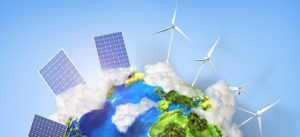Skip to content

The International Energy Agency’s latest and most comprehensive assessment of clean energy transitions finds that the vast majority of technologies and sectors are failing to keep pace with long-term goals.
Of the 45 energy technologies and sectors assessed in the IEA’s latest Tracking Clean Energy Progress (TCEP), only 7 are on track with the IEA’s Sustainable Development Scenario (SDS). The SDS represents a pathway to reach the goals of the Paris Agreement on climate change, deliver universal energy access and significantly reduce air pollution.
These latest findings follow an IEA assessment published in March showing that energy-related CO2 emissions worldwide rose by 1.7% in 2018 to a historic high of 33 billion tonnes.
Some clean energy technologies showed major progress last year, according to the new TCEP analysis. Energy storage is now “on track” as new installations doubled, led by Korea, China, the United States and Germany. Electric vehicles had another record year, with global sales hitting 2 million in 2018. China accounted for more than half of total sales.
Solar PV remains on track with a 31% increase in generation – representing the largest absolute growth in generation among renewable sources. But annual capacity additions of solar PV and renewable power as a whole levelled off in 2018, raising concerns about meeting long-term climate goals.
This year’s analysis expands coverage to include flaring and methane emissions from oil and gas operations, which are responsible for around 7% of the energy sector’s greenhouse gas emissions worldwide. Despite some positive developments over the past year, current technology deployment rates, policy ambition and industry efforts are still falling well short.
The buildings sector also remains off track, with emissions rising again in 2018 to an all-time high. This was the result of several factors, including extreme weather that raised energy demand for heating and cooling. Another concerning development was the slowdown in fuel economy improvements around the world as car buyers continued to purchase bigger vehicles.
Given the urgency and scale of actions needed for clean energy transitions around the world, this year’s TCEP features much greater emphasis on recommended actions for governments, industry and other key actors in the global energy system. The analysis also includes in-depth analysis on how to address more than 100 key innovation gaps across all sectors and technologies.
TCEP provides a comprehensive, rigorous and up-to-date expert analysis of clean energy transitions across a full range of technologies and sectors. It draws on the IEA’s unique understanding of markets, modelling and energy statistics to track and assess progress on technology deployment and performance, investment, policy, and innovation. It also draws on the IEA’s extensive global technology network, totalling 6,000 researchers across nearly 40 Technology Collaboration Programmes.
TCEP is part of the IEA’s broader efforts on tracking energy transitions and key indicators to help inform decision makers on where to focus innovation, investment and policy attention to achieve climate and sustainable development goals.
